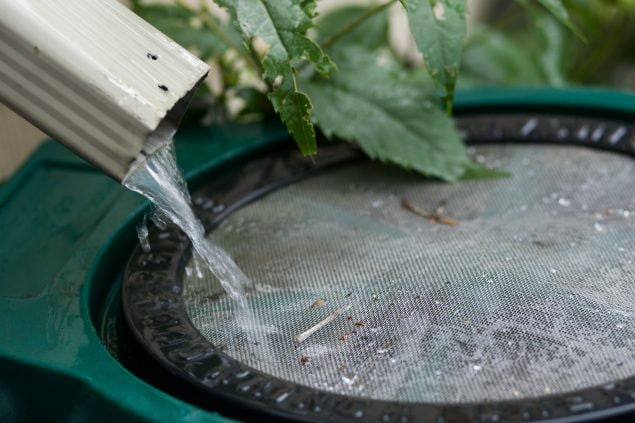Rainwater Collection
Cisterns can provide safe water for many uses, but do not assume rainwater is safe to drink.

Collecting and using rainwater can be a great way to conserve resources. Some people use rainwater for watering plants, cleaning, bathing, or drinking. However, it is important that the rainwater system is maintained properly and the water quality is appropriate for the intended use.
Germs and other contaminants are found in rainwater.
While useful for many things, rainwater is not as pure as you might think, so you cannot assume it is safe to drink. Rain can wash different types of contaminants into the water you collect (for example, bird poop on your roof could end up in your water barrel or tank). Rainwater can carry bacteria, parasites, viruses, and chemicals that could make you sick, and it has been linked to disease outbreaks.
The risk of getting sick from rainwater may be different depending on your location, how frequently it rains, the season, and how you collect and store the rainwater. Dust, smoke, and particles from the air can contaminate rainwater before it lands on your roof. Roofing materials, gutters, piping, and storage materials can introduce harmful substances such as asbestos, lead, and copper into the water. Dirt and germs can be washed into collected rainwater from the roof, especially when rain follows several days of dry weather.
Prevent illness

To lower your risk of getting sick, consider using rainwater only for uses such as watering plants that you don’t eat or washing items that are not used for cooking or eating. Avoid using rainwater for drinking, cooking, brushing your teeth, or rinsing or watering plants that you intend to eat. Instead, use municipal tap water if it is available, or purchase bottled water for these purposes.
If you have a weakened immune system, you should be especially careful when choosing your drinking water source. Discuss this with your healthcare provider.
Rainwater might not be safe for household use without additional treatment.
Before using collected rainwater for drinking, bathing, or cooking, consider whether treatment is needed to make it safe. Testing the water can determine if there are harmful germs, chemicals, or toxins in it. Water treatment options include filtration, chemical disinfection, or boiling. Filtration can remove some germs and chemicals. Treating water with chlorine or iodine kills some germs but does not remove chemicals or toxins. Boiling the water will kill germs but will not remove chemicals. Using a simple device called a “first flush diverter” to remove the first water that comes into the system may help avoid some of these contaminants. The amount of water that should be removed by a first flush diverter depends on the size of the roof feeding into the collection system.
Consider adding a screen to the water inlet or emptying the rain barrel at least every 10 days to prevent mosquitoes from using the rain barrel as a breeding site.
Some people add purchased, treated water to the rainwater they collect in their cistern. This may make the treated water less safe.
Regularly test your collected rainwater and maintain your rainwater system.
If you collect and store rainwater for drinking, you have an individual water system and are responsible for ensuring that your water is safe. You should have your water and your system tested regularly and maintain the system properly. When rainwater is used as a supplemental water source, homeowners should ensure that rainwater cannot enter pipes containing safe drinking water. Contact your state or local health department for more information.
Check local regulations and guidance.
Your local health authorities might provide additional guidance on safely collecting rainwater. Rainwater collection is not allowed in all places. Some states consider rainwater the property of the state and regulate its collection, so you should consult with your local government (for example, your environmental quality department or health department) before proceeding.